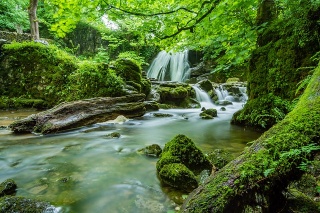The second strategy after tracing previous fact-finding work is to "go upstream" especially in cases where articles are reporting on other reporting. Upstream means going to the source.
- Primary source
- A primary source provides direct or firsthand evidence about an event, object, person, or work of art. Primary sources include historical and legal documents, eyewitness accounts, results of experiments, statistical data, pieces of creative writing, audio and video recordings, speeches, and art objects. Interviews, surveys, fieldwork, and Internet communications via email, blogs, listservs, and newsgroups are also primary sources. In the natural and social sciences, primary sources are often empirical studies—research where an experiment was performed or a direct observation was made. The results of empirical studies are typically found in scholarly articles or papers delivered at conferences[1].
- Secondary source
- Secondary sources describe, discuss, interpret, comment upon, analyze, evaluate, summarize, and process primary sources. Secondary source materials can be articles in newspapers or popular magazines, book or movie reviews, or articles found in scholarly journals that discuss or evaluate someone else's original research[1].
Activity - sponsored content
Part A
Rank the following news sources on how much sponsored content you believe their pages will feature: CNN, Buzzfeed, Washington Post, Huffington Post, Brietbart, New York Times.
Part B
Complete the Spot sponsored content activity[2].
Activity - trace viral photos upstream
This activity is based on finding the source and related information of four photographs.
Complete the activity: Trace viral photos upstream[2].
How did you go with these activities? Share your most interesting or challenging experience by posting a comment on WENotes below:
Note: Your comment will be displayed in the course feed.
References
- ↑ 1.0 1.1 Ithaca College Library. (n.d.) Primary and secondary sources
- ↑ 2.0 2.1 Caulfield, M. A. (2017). Web Literacy for Student Fact-Checkers


